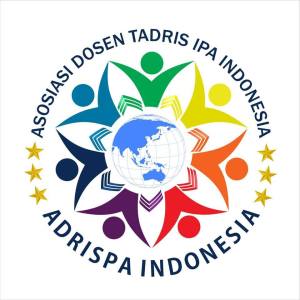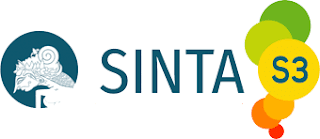INNOVATION OF BIOCHEMISTRY LEARNING IN WELCOMING THE SUPER SMART SOCIETY 5.0 ERA
DOI:
https://doi.org/10.21154/insecta.v2i2.3507Keywords:
Super-Smart Society 5.0, Biochemistry, Digital literacyAbstract
TTechnological developments are now in the era of super-smart society 5.0 which is an advanced solution to the 4.0 industrial revolution. The era of super-smart society 5.0 is a learning innovation that changes from basic literacy to digital literacy. This study aims to analyze the innovation of Biochemistry learning in the Department of Chemistry at UIN Sayyid Ali Rahmatullah Tulungagung in welcoming the era of super-smart society 5.0. The research method used descriptive qualitative. The data analysis technique was carried out using a literature review. The method of data collection was carried out by observation, distributing questionnaires, documentation, lecturer interviews, and student interviews. The research instrument consisted of observation sheets, questionnaires, and interview sheets. The results showed that in the era of super-smart society 5.0, lecturers and students were required to be quick in making decisions and solutions when learning Biochemistry. Lecturers must dig up information and look for innovations so that students can think ahead and keep up with the times according to the era of super-smart society 5.0. Lecturers act as tutors or teachers, facilitators, and inspire students to achieve learning objectives. Based on the results of the study, it can be concluded that lecturers must have the ability in digital literacy and train students to be able to think critically and creatively in learning Biochemistry in the era of super-smart society 5.0.References
Aparicio, M., Bacao, F., & Oliveira, T. (2016). Cultural Impacts on E-learning Systems’ Success. Internet and Higher Education, 31(1), 58”“70. https://doi.org/10.1016/j.iheduc.2016.06.003
Arsyad, A. (2013). Media Pembelajaran. PT Raja Grafindo Persada. Jakarta.
B Boholano, H. (2017). Smart Social Networking: 21st Century Teaching and Learning Skills. Research in Pedagogy, 7(1), 21”“29. https://doi.org/10.17810/2015.45
Bingimlas, K. A. (2009). Barriers to the successful integration of ICT in teaching and learning environments: A review of the literature. Eurasia Journal of Mathematics, Science and Technology Education, 5(3), 235”“245. https://doi.org/10.12973/ejmste/75275
Dede, C. (2010). Comparing frameworks for 21st century skills. 21st Century Skills: Rethinking How Students Learn, 51”“76.
Dewi, R. K., & Wardani, S. (2020). Guided Inquiry Assisted by Edmodo Application to Improve Student Critical Thinking Skills in Redox Material. Journal of Physics: Conference Series, 1567(4). https://doi.org/10.1088/1742-6596/1567/4/042097
Dewi, R. K., Wardani, S., & Wijayati, N. (2019). Profile of Students Critical Thinking Skills on Redox Concept in SMA Negeri 8 Semarang. Journal of Physics: Conference Series, 1321(2). https://doi.org/10.1088/1742-6596/1321/2/022048
Dewi, Ratna Kumala. (2021). Inovasi Pembelajaran Biokimia dalam Menyongsong Era Super Smart. PISCES: Proceeding of Integrative Science Education Seminar, 1, 33”“41.
Dewi, Ratna Kumala, Haryani, S., & Wardani, S. (2018). The Influence of Guided Inquiry Learning Assisted Flash Application on Electrolyte Solution Materials Against The Results of Students. Unnes Science Education Journal, 7(2), 221”“228.
Dewi, Ratna Kumala, & Wardani, S. (2018). Analysis of Student Difficulties and Learning Outcomes with Guided Inquiry Learning Model. Social Science, Education and Humanities Research (ASSEHR), 247(1), 379”“384.
Dewi, Ratna Kumala, Wardani, S., Wijayati, N., & Sumarni, W. (2019). Demand of ICT-Based Chemistry Learning Media in the Disruptive Era. International Journal of Evaluation and Research in Education (IJERE), 8(2), 265”“270. https://doi.org/10.11591/ijere.v8i2.17107
Faika, S., & Side, S. (2011). Analisis Kesulitan Mahasiswa dalam Perkuliahan dan Praktikum Kimia Dasar di Jurusan Kimia FMIPA Universitas Negeri Makassar. Jurnal Chemica, 12(2), 18”“26.
Hadinugrahaningsih, T., Rahmawati, Y., & Ridwan, A. (2017). Developing 21st century skills in chemistry classrooms: Opportunities and challenges of STEAM integration. AIP Conference Proceedings, 1868. https://doi.org/10.1063/1.4995107
Harahap, L. W., & Surya, E. (2017). Development of Learning Media in Mathematics for Students ’ with Special Needs. International Journal of Sciences : Basic and Applied Research, 33(3), 1”“12.
Holroyd, C. (2020). Technological innovation and building a ”˜super smart’ society: Japan’s vision of society 5.0. Journal of Asian Public Policy, 00(00), 1”“14. https://doi.org/10.1080/17516234.2020.1749340
Jack, G. U. (2013). Concept Mapping and Guided Inquiry as Effective Techniques for Teaching Difficult Concepts in Chemistry : Effect on Students ’ Academic Achievement. Journal of Education and Practice, 4(5), 9”“16.
Khasanah, A. N., Sajidan, S., & Widoretno, S. (2017). Effectiveness of critical thinking indicator-based module in empowering student’s learning outcome in respiratory system study material. Jurnal Pendidikan IPA Indonesia, 6(1), 187”“195. https://doi.org/10.15294/jpii.v6i1.8490
Kuchel PW, R. G. (2006). Biokimia. Jakarta: Erlangga.
Kwan, Y. W., & Wong, A. F. L. (2015). Effects of the constructivist learning environment on students’ critical thinking ability: Cognitive and motivational variables as mediators. International Journal of Educational Research, 70. https://doi.org/10.1016/j.ijer.2015.02.006
Lin, M.-H. (2017). A Study of the Effects of Digital Learning on Learning Motivation and Learning Outcome. EURASIA Journal of Mathematics, Science and Technology Education, 13(7), 3553”“3564. https://doi.org/10.12973/eurasia.2017.00744a
Littlejohn, A., Falconer, I., & Mcgill, L. (2008). Characterising effective eLearning resources. Computers and Education. https://doi.org/10.1016/j.compedu.2006.08.004
Murray RK, Granner DK, R. V. (2009). Biokimia harper. 27th ed. Jakarta: EGC.
Österlund, L., Berg, A., & Ekborg, M. (2010). Redox models in chemistry textbooks for the upper secondary school : friend or foe ?, (1995), 182”“192. https://doi.org/10.1039/C005467B
Poedjiadi, S. (2007). Dasar-Dasar Biokimia. Bandung: UI Press.
Pratiwia, K. F., Wijayati, N., Mahatmantia, F. W., & Marsudi. (2015). Pengaruh Model Pembelajaran Inkuiri Terbimbing Berbasis Penilaian Autentik terhadap Hasil Belajar Siswa. Jurnal Inovasi Pendidikan Kimia, 21(3), 299”“316. http://idealmathedu.p4tkmatematika.org
Prayogi, R. D., & Estetika, R. (2019). Kecakapan abad 21: Kompetensi pendidikan masa depan. Jurnal Manajemen Pendidikan, 14(2), 144”“151.
Putri, R. J., Rahman, T., & Qonita, D. (2021). Penerapan Model Pembelajaran Multiple Intelligences untuk Menyiapkan Siswa di Era Super Smart Society 5.0. Edukatif : Jurnal Ilmu Pendidikan, 3(3), 871”“879. https://doi.org/10.31004/edukatif.v3i3.415
Rahmatan, H., Liliasari, & Redjeki, S. (2012). Pengembangan Model Pembelajaran Biokimia Berbasis Komputer untuk Membekali Keterampilan Berpikir Kreatif Mahasiswa Calon Guru Biologi. Jurnal Pendidikan IPA Indonesia, 1(2), 178”“182.
Rias, R. M., & Zaman, H. B. (2013). Understanding the role of prior knowledge in a multimedia learning application. Australasian Journal of Educational Technology, 29(4), 537”“548.
Roblek, V., Meško, M., & Krapež, A. (2016). A Complex View of Industry 4.0. SAGE Open, 6(2). https://doi.org/10.1177/2158244016653987
Sitepu, B. P., & Lestari, I. (2017). Pelaksanaan Rencana Pembelajaran Semester dalam Proses Pembelajaran di Perguruan Tinggi. Perpektif Ilmu Pendidikan, 32(1), 43”“51.
Sudibjo, N., Idawati, L., & Retno Harsanti, H. (2019). Characteristics of Learning in the Era of Industry 4.0 and Society 5.0. Advances in Social Science, Education and Humanities Research, 372(ICoET), 276”“278. Tabor, S. W. (2013). Student Adoption & Development of Digital Learning Media: Action Research and Recommended Practices. Journal of Information Technology Education: Research, 12, 203”“223.
Vong, S. A., & Kaewurai, W. (2017). Instructional model development to enhance critical thinking and critical thinking teaching ability of trainee students at regional teaching training center in Takeo province, Cambodia. Kasetsart Journal of Social Sciences, 38(1). https://doi.org/10.1016/j.kjss.2016.05.002
Wahyuni, T. S. (2019). Pengembangan Buku Ajar Matakuliah Biokimia Berintegrasi dengan Nilai-Nilai Sains dalam Alquran. Jurnal Zarah, 7(1), 1”“6. https://doi.org/10.31629/zarah.v7i1.1259
Widyaningrum, D. A., & Wijayanti, T. (2019). Implementasi Buku Petunjuk Praktikum Biokimia Berbasis Inkuiri Terbimbing untuk Meningkatkan Kemampuan Kerja Ilmiah. Jurnal Pendidikan, Biologi Dan Terapan, 4(2), 58”“67.
Wijaya, E. Y., Sudjimat, D. A., & Nyoto, A. (2016). Transformasi Pendidikan Abad 21 sebagai Tuntutan Pengembangan Sumber Daya Manusia di Era Global. Prosiding Seminar Nasional Pendidikan Matematika 2016, 1(1), 263”“278.
Wilson, K. (2016). Critical reading, critical thinking: Delicate scaffolding in English for Academic Purposes (EAP). Thinking Skills and Creativity, 22. https://doi.org/10.1016/j.tsc.2016.10.002








